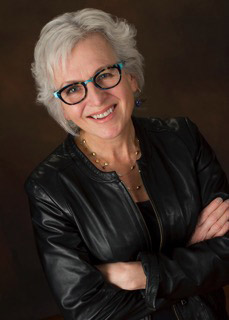By Yuval (Tuby) Zolotov

Yuval (Tuby) Zolotov is a medical cannabis researcher and a PhD student at the School of Public Health at the University of Haifa. He completed his Master in Health Administration at Bar Ilan University where he investigated adherence to medical cannabis among licensed patients in Israel. Before joining academia in 2012, Yuval was a licensed Patient Instructor and has been involved with the local industry since its inception. While working on his thesis – Medical Cannabis Recommendation: Understanding and Predicting Physicians’ Behavior – Yuval is also involved in various research projects.
Meet the Experts is a series of interviews conducted by experts from the field of Cannabis to world leaders in research and clinical practice of Cannabis as medicine.

Professor and Management in Dalhousie University, Nova Scotia, Canada. Professor Kelly is also the Executive Director of the International Cannabinoid Research Society, a Canadian Consortium for the Investigation of Cannabinoids, Board Member and Director and Chief Scientific Officer, Panag Pharma Inc. Halifax, Nova Scotia, Canada.
Dr. Kelly's primary research expertise is in translational pharmacology and drug discovery. Her research specifically addresses the pharmacology of the endocannabinoid system and how cannabis and cannabinoids can modify disease.
She has published more than 100 publications in the area of pharmacology, cannabinoids and the endocannabinoid system and holds several patents in the area of cannabinoid drugs for therapeutic management of disease. Dr. Kelly's recent work has focused on development of new therapies to alleviate pain and inflammation. As one of the founders of a small drug company based in Halifax, she is working to leverage research discoveries into Health Canada approved medicines for those suffering from chronic neurodegenerative diseases.
Yuval Zolotov: How did you start being engaged in cannabinoid research?
Melanie Kelly: I have been involved with cannabinoid research since 1998. I am a pharmacologist who is interested in drug discovery. At the time, I was married to an ophthalmologist, and he suggested that I delve into testing drugs related to the eye. I then met a colleague at Dalhousie University, Orlando Hung, a very clever and forward-thinking Anesthetist with a drug delivery background. He was very interested in developing medications for postoperative pain, which would be patient accessible. I joined his efforts to develop a nebulizer for an inhaled preparation of THC. We started to test it in animal models, in order to check whether this delivery method would be effective in reducing intraocular pressure. The process of developing non-smoked methods for delivery of THC captured my scientific curiosity; I was so intrigued with the science of cannabinoids and the endocannabinoid system that I have been firmly immersed into this research field ever since.
YZ: In what area of research are you particularly interested?
MK: I started working in the field of glaucoma because one of the most robust reproducible effects reported for THC was a reduction in intraocular pressure (IOP). However, I soon realized that cannabinoids may not be ideal for glaucoma given the sort duration of action for IOP lowering, the tolerance that develops with chronic use, and the availability of alternative effective ocular hypotensive medications. At this time, there was a lot of literature coming out about the CB2 receptor, and about the potential of this receptor as an immuno-suppressive target. Given that so many chronic neurodegenerative diseases have an inflammatory component and cannabinoids that activate the CB2 receptor don't produce psycho-activity, this makes this receptor a particularly attractive target for development of new therapeutics. Since I am very interested in translating research findings into useable medications for people, I started to work on animal models to duplicate the types of inflammation that people get in ocular diseases and we found that we could achieve remarkable effects by activating the CB2 receptor. We had some really amazing results. I worked with many talented colleagues and students within academia, and also from the industry, and published extensively on our findings. I have a patent now for ocular use of CB2 drugs and I really hope that within two years, we will have a drug that will be very useful for ocular inflammatory diseases, as well as for ocular neuropathic pain and dry eye disease.
YZ: Can you tell our readers a little bit about how are cannabinoids related to Ophthalmology & Visual Science?
MK: Some of the very first reports about the effects of cannabinoids were actually on the effects on the eye. That was around 1974, when it was reported that ingestion of cannabis could reduce ocular pressure, which is the major modifiable risk factor for glaucoma. Subsequent research identified that the eye has its own endocannabinoid system, like other organs in the body, such as our brain. We have the receptors there, as well as the endogenous molecules, and they regulate lots of different fundamental functions of the eye, such as the intraocular pressure and the immune response of the eye. The endocannabinoids are also important for transmission of neuronal signals from nerve cells in the retina at the back of the eye to the brain. Thus, the endocannabinoid system is involved in regulating almost all aspects of the ocular function, from basic vision to immune response and pain.
YZ: You just explained us about endocannabinoids – now what about cannabis itself?
MK: So cannabis constituents from the plant (phyto-cannabinoids) have enough chemical similarity to endogenous cannabinoid molecules produced in our body that they can target the same receptors in the endocannabinoid system to modify endocannabinoid system functions. Some cannabis constituents can also act on other non-cannabinoid receptors to produce favorable therapeutic effects including decreasing pain and inflammation. However, we still have to remember that the endocannabinoid system is a very sensitive biological system. In order to accomplish a desired beneficial response, we need a balanced effect that is both reproducible and specific with minimal undesirable effects. There are many enzymes and special proteins in our body that regulate the production and the elimination of these endogenous cannabinoids. It is a very complicated system and it also overlaps with other systems in our body. Our goal is to find the individual identified molecules, either from plant source or from synthetic derivatives, that can act selectively on the endocannabinoid system. We also need to identify the best disease-specific targets for the best molecules and the optimal dosage that maximizes benefit and minimizes risks. And that is the focus of my work.
YZ: Are you using only synthetic cannabinoids or also herbal cannabis?
MK: Synthetics or individual extracted phytocannabinoids are much easier for us to study. When we take a whole cannabis plant, there are hundreds of bioactive molecules in there. It makes it very messy to study and to work with. While the patient-reported effects of using whole plant material or extract may be very positive compared to their experiences using individual cannabinoids, identifying those individual molecular interactions is much more complicated in whole plant extract than using isolated molecules. Furthermore, modern drug discovery cumulating in appropriate approvals for new drugs is very difficult to achieve with the whole plant. It is possible that by better identifying the actions of individual plant cannabinoids or synthetic derivatives, we may be able in the future to develop more selective and efficacious drugs. For example, one way that drug action can be improved is to modify the structure of cannabinoids in order to be more selective for one receptor target versus another or change the magnitude or duration of effect by affecting metabolism in the body. These changes sometimes just require a small modification to the chemistry of the parent molecule. In the case of cannabis, the work of pioneer chemists, including Professor Mechoulam who reported the structure of THC in 1964, has led to the development of numerous synthetic derivatives that are based on molecular information of phytocannabinoids from the cannabis plant itself. This has provided valuable tools to facilitate our understanding of the endocannabinoid system and its potential as a therapeutic target. Indeed, I am very interested in the lessons that we can learn from nature. For example, together with colleagues, and in concert with other international researchers, I have been studying the terpenes that are found in cannabis. Specifically, we found that beta-caryophyllene does a very good job in targeting the CB2 receptor. This natural compound is anti-inflammatory and not psychoactive (does not act at the brain CB1 receptor). Therefore, we are very interested in taking advantage of the pharmacological properties of some of these other cannabis constituents to develop accessible dose-standardized medications that are tested and approved as a natural product medicines.
YZ: What do you think about patients that suffer from diseases or disorders related to their eyes – who uses cannabis as a treatment?
MK: Of course, some patients use it and it may have effects on intraocular pressure, but the main problem is that there are no approved eye drops available for people to use and therefore the effects of cannabis are whole-body effects and not just localized to the eye. Furthermore, we also have other drugs that may be more effective for producing a reduction in eye pressure than cannabis and have met drug approval standards for a prescription medication. Thus, at this time, I do not think you would be able to find an ophthalmologist, at least in North America, that will recommend to their patients to use cannabis as a stand-alone medication for ocular pressure lowering in glaucoma. However, that being said, there is a body of evidence from preclinical work that indicates that cannabinoids may protect the neurons in the retina of the eye from damage; whereas eye pressure is a risk factor in glaucoma, the loss of vision is actually due death of special neurons of the retina that transmit vision. So if patients use cannabis for another indication, such as neuropathic pain, in combination with an eye drop used to reduce ocular pressure, then cannabis, or a cannabinoid drug, used as an adjunct medication, could potentially provide a therapeutic advantage for them.
Another important thing to mention is that I live in a Western country, where people have access to good healthcare and prescription drugs. But in some parts of the world this is not the case, and in these parts of the world most people cannot afford prescription medications and have an increased burden of blindness. So in this case if for those people ingestion of cannabis is the only available affordable drug that can reduce eye pressure and/or protect those sensitive retinal neurons, then this is something worth considering.
YZ: What are the current challenges in cannabis and cannabinoid research?
MK: There are still significant barriers to cannabis and cannabinoid research. For example, in Canada, despite the move to legalization and regulation of cannabis at the federal level, cannabis has up until later this 2018, is and has been a scheduled and controlled drug and research use requires a special exemption. While the passing of bill C-45 legalizing and regulating cannabis will likely change this for research use of phytocannabinoids, the synthetic cannabinoids and endocannabinods will still require exemptions for use as controlled substances with appropriate institutional and site conditions around security and storage and use. Getting the appropriate exemptions in place is definitely a barrier for carrying out both preclinical and clinical cannabinoid research. Another barrier to research, especially clinical research, is the existing stigma surrounding cannabis and cannabinoids within the medical community. This is mainly linked to lack of knowledge about the endocannabinoid system. Even when I am invited to talk in front of professionals, I still experience a lot of skepticism. This stigma is obviously a big barrier for patients as well.
YZ: You are currently serving as the Executive Director of the International Cannabinoid Research Society (ICRS). What would you like to share with our readers about your activities?
MK: The ICRS is the largest scientific society whose mandate specifically addresses research related to cannabis and cannabinoids and the endocannabinoid system. While in the past, much of the focus was on pre-clinical research, more recently we are integrating significantly more clinical research into our activities. We have annual meetings in which the newest scientific and medical findings are being reported. These events are always both very fascinating and also extremely enjoyable. Some of the world's most renowned scientists have presented their earlier research in this forum, and, fortunately, they continue to do so even after they become more successful and internationally renowned. At our meeting, scientists from ICRS also interact with industry colleagues and I hope that in the next years we will also be able to reach out and disseminate new research findings to broader audiences from the non-academic community, in order to ensure that the most updated evidence-based scientific information regarding the endocannabinoid system and cannabinoids is being shared by all.
YZ: How do you see your role as a scientist during the current evolvement of reforms in medical cannabis regulations?
MK: I really believe that as scientists and clinicians our bigger goal is to improve the wellbeing of humankind. I know it may sound somewhat overstated, but this is what we all should strive for. While policies are rapidly changing, not only for medical cannabis, but also cannabis use in general, it is clear that knowledge and scientific evidence-based data should be put forward as the main tenets to support these policies. Many scientists working in cannabinoid research are regularly working in teams to solve important questions related to the endocannabinoid system. So I believe that scientists from across different disciplines and clinicians should work together to support the changing policies of cannabis. In Canada, we have the Canadian Consortium for the Investigation of Cannabinoids (CCIC), which I am happy to contribute to as one of the members of their board of directors. The CCIC provides education on the endocannabinoid system and medical use of cannabis and cannabinoids to clinicians, researchers and health care professionals via conferences and workshops and also online information. So I see my role as a scientist and educator as an important part of a larger team effort for knowledge translation particularly in the area of therapeutic targeting of the endocannabinoid system; because preclinical findings can, in turn, feed into clinical potential that can guide clinicians in their work.
YZ: You live in Canada, where there is an expected change in the legal status of cannabis – do you have any position or opinion about the legal status of cannabis itself?
MK: I think that in general, this is a good step forward as prohibition has historically not worked and led to a proliferation of the so-called black market. In Canada the government will legalize and regulate the supply of cannabis putting in place controls over quality of material, advertising and age of access, with a minimum age-limit of 18 years and higher in some provinces to purchase cannabis from legal outlets. Additionally, the government will introduce education campaigns directed at responsible use and harms reductions. However, while in principal I think legalization and regulation of cannabis are an important step forward, I still have a few concerns with regard to youth cannabis use. Globally, Canada has one of the highest youth uses of cannabis. As most youth will be below the legal age to purchase regulated cannabis, this means their illegal sources such as the black market will continue. We will need to monitor youth use closely and implement appropriate education programs directed specifically to youth to address the harmful effects of cannabis (and other drugs) especially on the developing brain.
With regard to medical cannabis, this has been available to patients in Canada since 1999 with a doctor's recommendation, and more recently an authorization under the Access to Cannabis for Medical Purposes regulation (ACMPR). This will continue after legalization, at least in the short-term, as a separate regime. However, how medical cannabis interfaces with the new legal adult-use cannabis market in Canada is at this time somewhat unclear. For example, because medical cannabis is not an approved drug in Canada, most patients will not be able to obtain insurance to have their medical cannabis covered under a drug plan. Additionally, many doctors are still not comfortable with providing authorizations for a non-approved drug and feel that after legalization there is no longer a need to involve physicians in authorizing medical cannabis. I think that the Canadian government could have dealt more thoroughly with such issues surrounding medical cannabis before moving to full legalization. However, that being said, I think it is important for all people involved in the medical cannabis field to advocate and lobby so that medical cannabis and patients needs will be of more focus and will not take a back seat in Canada following legalization. Following on from that, I believe that legalization may lift some of the barriers to research allowing the future development of improved cannabinoid drugs, either derived from the plant or synthetic, and will lead to large scale clinical trials that are necessary to demonstrate efficacy for alleviating human and animal diseases.


